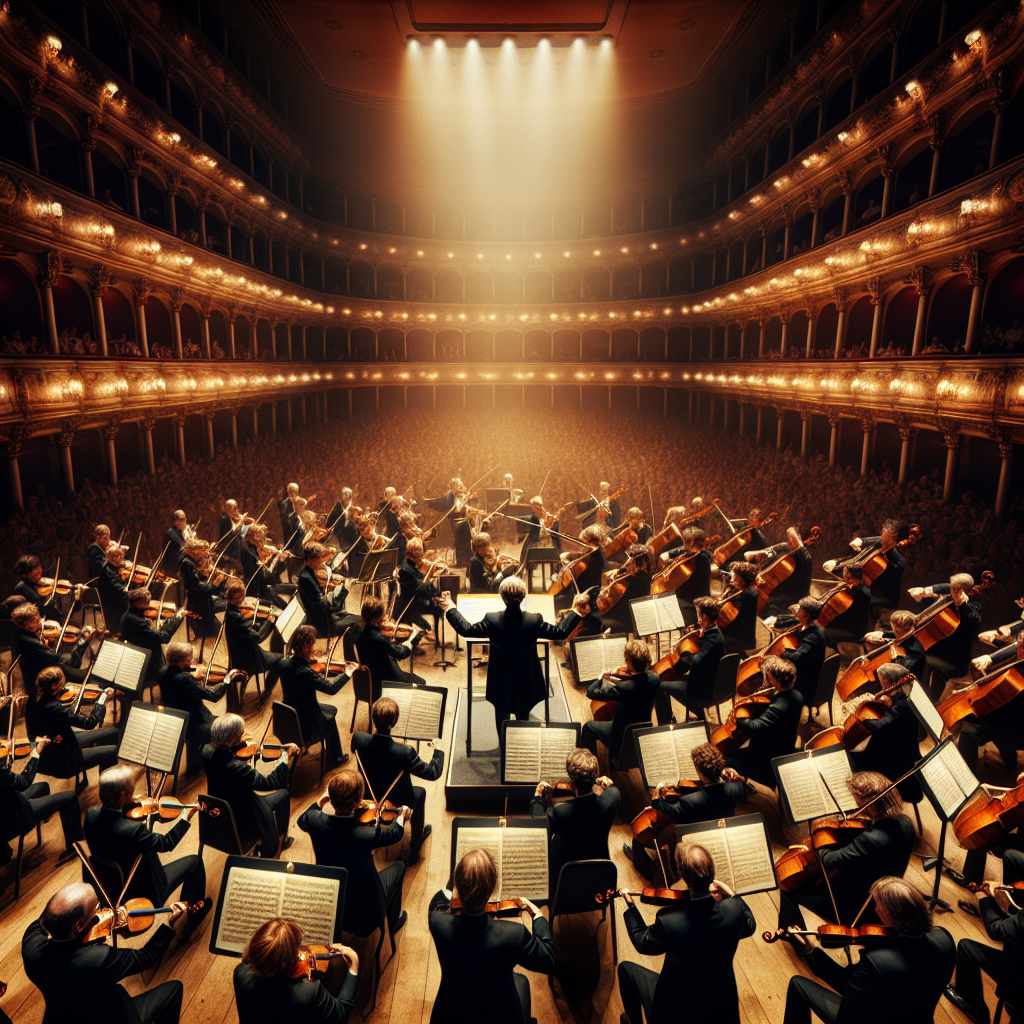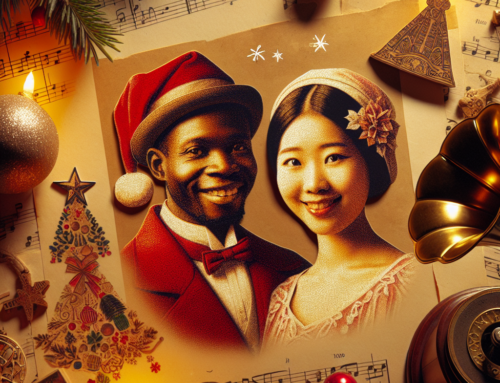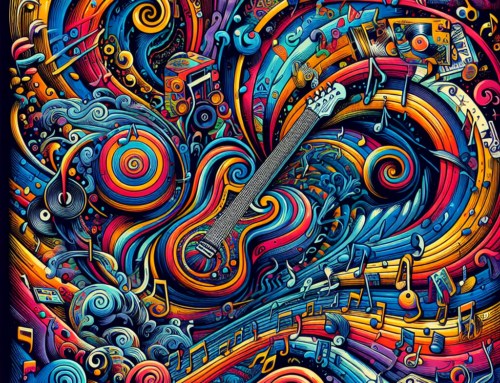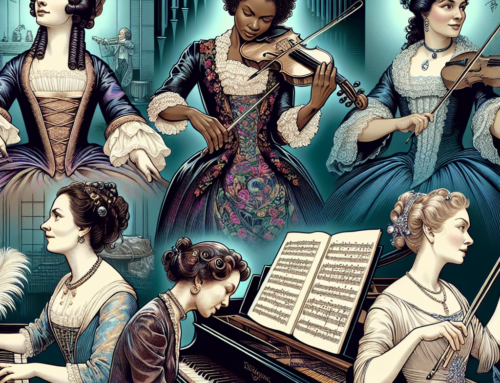-
Table of Contents
PlaylistSound’s suggest – Classical music category page
“Unveiling the Symphony: Journey into the Heart of Classical Orchestras”
Introduction
“Behind the Baton: Exploring the World of Classical Orchestras” dig into the intricate and captivating realm of orchestral music, offering readers an insider’s perspective on the artistry and dynamics that define these grand ensembles. This exploration unveils the rich history, cultural significance, and the meticulous craft of conducting and performing within a symphony orchestra. Through vivid narratives and expert insights, the book illuminates the roles of musicians, the nuances of orchestral compositions, and the transformative power of live performances. Whether a seasoned aficionado or a curious newcomer, readers are invited to discover the passion and precision that bring classical masterpieces to life, revealing the profound impact of orchestras on audiences worldwide.
The Role Of The Conductor: Leadership And Interpretation In Classical Orchestras
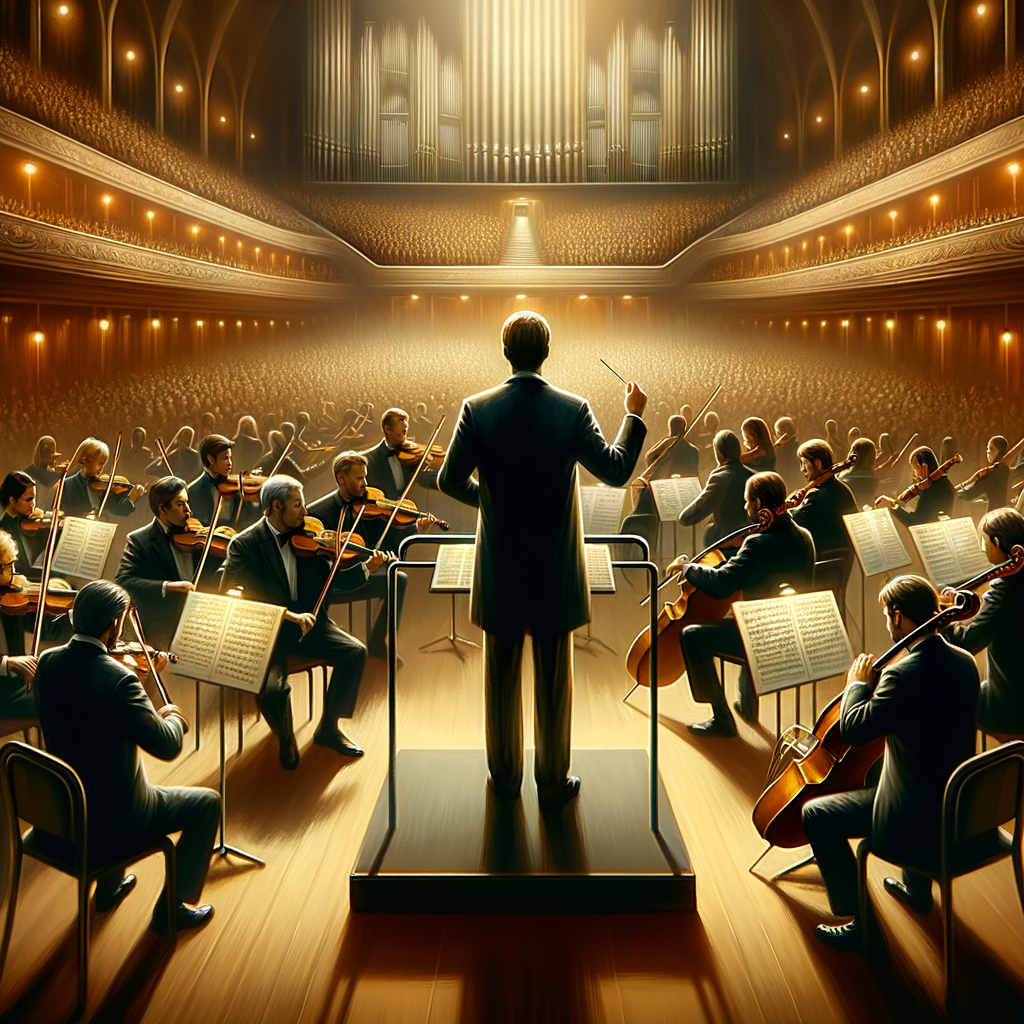
When you think of a classical orchestra, the first image that might come to mind is a sea of musicians, each with their own instrument, creating a harmonious blend of sound. But at the heart of this musical ensemble stands a figure who, with a mere flick of the wrist or a subtle nod, guides the entire performance: the conductor. The role of the conductor is often shrouded in mystery, leaving many to wonder what exactly this person does beyond waving a baton. However, the conductor’s role is crucial, serving as both a leader and an interpreter, ensuring that the orchestra not only plays in unison but also breathes life into the music.
To begin with, the conductor is the ultimate leader of the orchestra. Imagine trying to coordinate dozens of musicians, each with their own part to play, without someone to guide them. It would be like trying to steer a ship without a captain. The conductor provides the necessary direction, ensuring that everyone is on the same page, quite literally. Through gestures and expressions, the conductor communicates tempo, dynamics, and expression, acting as a bridge between the written score and the musicians. This leadership is not just about keeping time; it’s about creating a cohesive sound that reflects the intentions of the composer.
Moreover, the conductor’s role extends beyond mere leadership; it involves deep interpretation of the music. Each piece of music carries its own story, emotions, and nuances, and it is the conductor’s job to uncover these layers and convey them to both the orchestra and the audience. This requires a profound understanding of the music, as well as the ability to inspire and evoke emotion from the musicians. A conductor must delve into the historical context of the piece, the composer’s intentions, and even the cultural influences that shaped the music. By doing so, they can bring a unique perspective to the performance, making each rendition of a piece distinct and memorable.
Transitioning from the theoretical to the practical, the conductor’s influence is evident during rehearsals. This is where the magic truly happens. Rehearsals are a time for experimentation, where the conductor works closely with the musicians to fine-tune every detail. It’s a collaborative process, where ideas are exchanged, and interpretations are tested. The conductor must be both a teacher and a collaborator, offering guidance while also being open to the insights of the musicians. This dynamic interaction is what ultimately shapes the final performance, transforming notes on a page into a living, breathing work of art.
In addition to their musical responsibilities, conductors also play a vital role in the public face of the orchestra. They are often the ones who engage with the audience, providing context for the music and enhancing the overall concert experience. Their passion and enthusiasm can be infectious, drawing listeners into the world of classical music and fostering a deeper appreciation for the art form.
In conclusion, the role of the conductor in a classical orchestra is multifaceted, encompassing leadership, interpretation, collaboration, and public engagement. While their presence on stage may seem enigmatic, their impact is undeniable. Through their guidance, they not only ensure that the orchestra performs as a unified whole but also breathe life into the music, creating an experience that resonates with both musicians and audiences alike. So, the next time you find yourself at a classical concert, take a moment to appreciate the conductor’s artistry, for it is their vision that brings the music to life.
The Evolution Of Orchestral Instruments: From Baroque To Modern
When you think about classical orchestras, you might picture a grand stage filled with musicians, each one poised with their instrument, ready to create a symphony of sound. But have you ever wondered how these instruments have evolved over time? It’s a fascinating journey that takes us from the ornate halls of the Baroque period to the modern concert venues of today. Let’s dive into this evolution and see how these changes have shaped the music we love.
Back in the Baroque era, which spanned from around 1600 to 1750, orchestras were quite different from what we see today. The instruments were more limited in range and variety. Violins, violas, and cellos were already prominent, but they were accompanied by instruments like the harpsichord and the lute, which have since faded into the background. The sound was more intimate, with smaller ensembles that allowed for intricate interplay between the musicians. Composers like Bach and Vivaldi thrived in this environment, crafting complex pieces that showcased the capabilities of these early orchestras.
As we moved into the Classical period, roughly from 1750 to 1820, the orchestra began to expand. The harpsichord was gradually replaced by the fortepiano, an early version of the piano, which offered greater dynamic range and expressive potential. Wind instruments like the clarinet and the French horn started to make their way into the ensemble, adding new colors and textures to the music. This period saw the rise of composers like Mozart and Haydn, who took full advantage of these new possibilities to create symphonies that were both elegant and powerful.
Transitioning into the Romantic era, from about 1820 to 1900, orchestras grew even larger and more diverse. The Industrial Revolution played a significant role here, as it led to improvements in instrument design and manufacturing. Brass instruments like the trumpet and trombone became more reliable and versatile, while woodwinds like the flute and oboe gained keys that allowed for greater agility and range. This was the age of Beethoven, Brahms, and Tchaikovsky, who pushed the boundaries of what an orchestra could do, creating music that was grand, emotional, and often epic in scale.
In the 20th century, orchestras continued to evolve, embracing new technologies and ideas. The invention of the valve system for brass instruments, for example, allowed for even more complex and varied compositions. Composers like Stravinsky and Shostakovich experimented with dissonance and rhythm, challenging traditional notions of harmony and structure. Meanwhile, electronic instruments and amplification began to make their way into the concert hall, further expanding the sonic palette available to composers.
Today, orchestras are incredibly versatile, capable of performing everything from Baroque masterpieces to cutting-edge contemporary works. The instruments have become more standardized, but there’s still room for innovation and experimentation. Musicians and composers continue to push the boundaries, finding new ways to express the timeless beauty and power of orchestral music.
So, the next time you find yourself at a concert, take a moment to appreciate the rich history behind the instruments on stage. Each one has a story to tell, a journey that has brought it from the past to the present. And who knows what the future holds? The world of classical orchestras is always evolving, and that’s part of what makes it so endlessly fascinating.
The Art Of Rehearsal: How Orchestras Prepare For A Performance
Stepping into the world of classical orchestras is like entering a realm where every note, every pause, and every gesture is meticulously crafted to create a harmonious masterpiece. The art of rehearsal is where this magic begins, a process that is as fascinating as the performance itself. Imagine walking into a rehearsal space, the air buzzing with anticipation and the soft rustle of sheet music. Musicians are scattered across the room, each one tuning their instruments, exchanging nods, and sharing a few laughs. It’s a scene that feels both intimate and grand, a prelude to the symphony that will soon unfold.
Rehearsals are where the real work happens, where the conductor and musicians come together to breathe life into the notes on the page. The conductor, often seen as the maestro, plays a pivotal role in shaping the sound of the orchestra. With a flick of the baton, they guide the musicians through the intricate passages of the score, ensuring that every section is in perfect harmony. It’s a dance of sorts, a silent conversation between the conductor and the orchestra, where every gesture conveys meaning and direction.
As the rehearsal progresses, the musicians delve deeper into the music, dissecting each movement with precision. They focus on dynamics, tempo, and phrasing, striving to capture the essence of the composition. It’s a process that requires patience and collaboration, as each musician must listen intently to their fellow players, adjusting their own performance to blend seamlessly with the ensemble. This is where the true artistry of an orchestra shines, in the ability to create a unified sound from a diverse group of individuals.
One of the most intriguing aspects of rehearsal is the way in which musicians communicate. While words are certainly used, much of the interaction is non-verbal. A raised eyebrow, a nod, or a subtle shift in posture can convey volumes. This silent language is a testament to the deep connection that exists within an orchestra, a bond forged through countless hours of practice and shared passion for the music.
Rehearsals are also a time for experimentation and exploration. Musicians and conductors alike are encouraged to take risks, to try new interpretations, and to push the boundaries of their performance. This creative freedom is essential, allowing the orchestra to discover new depths in the music and to bring a fresh perspective to each performance. It’s a reminder that classical music, while steeped in tradition, is also a living art form, constantly evolving and adapting.
As the rehearsal draws to a close, there’s a palpable sense of accomplishment in the room. The musicians have journeyed through the complexities of the score, emerging with a deeper understanding of the music and each other. They leave the rehearsal space with a renewed sense of purpose, ready to share their artistry with an audience. In many ways, the art of rehearsal is a microcosm of the orchestral experience, a blend of discipline, creativity, and camaraderie that culminates in the magic of a live performance. It’s a world that, once glimpsed, leaves an indelible impression, inviting us to appreciate not just the final performance, but the journey that brings it to life.
Iconic Orchestras Around The World: A Journey Through History And Culture
When you think of classical music, it’s hard not to imagine the grand orchestras that have shaped the genre over centuries. These iconic ensembles are more than just a collection of musicians; they are living, breathing entities that carry the weight of history and culture on their shoulders. As we embark on this journey through the world of classical orchestras, it’s fascinating to see how each one reflects the unique spirit of its home country while contributing to the global tapestry of music.
Let’s start our exploration with the Vienna Philharmonic, an orchestra that is practically synonymous with classical music itself. Founded in 1842, this Austrian ensemble has been at the forefront of the classical music scene for nearly two centuries. The Vienna Philharmonic is renowned for its New Year’s Concert, a tradition that has become a global event, broadcast to millions around the world. The orchestra’s sound is often described as warm and rich, a reflection of Vienna’s deep musical heritage. It’s not just about the music, though; attending a performance in the opulent Musikverein is an experience that transports you to another era, where the elegance of the past meets the vibrancy of the present.
Moving westward, we find ourselves in the heart of London, home to the London Symphony Orchestra. Established in 1904, the LSO has a reputation for innovation and versatility. It’s an orchestra that isn’t afraid to push boundaries, often collaborating with contemporary artists and exploring new musical territories. The LSO’s commitment to education and community outreach is also noteworthy, as they strive to make classical music accessible to all. This forward-thinking approach is a testament to London’s dynamic cultural landscape, where tradition and modernity coexist in harmony.
Crossing the Atlantic, we arrive in New York City, where the New York Philharmonic holds court. As the oldest symphony orchestra in the United States, founded in 1842, the NY Phil has played a pivotal role in shaping the American classical music scene. Its history is intertwined with the cultural evolution of the city itself, reflecting the diverse and ever-changing nature of New York. The orchestra’s performances at Lincoln Center are a testament to the city’s vibrant arts scene, where audiences from all walks of life come together to celebrate the universal language of music.
Heading east, we find ourselves in Tokyo, where the NHK Symphony Orchestra offers a unique blend of Eastern and Western musical traditions. Founded in 1926, this Japanese orchestra has gained international acclaim for its precision and artistry. The NHK Symphony Orchestra is a symbol of Japan’s post-war cultural renaissance, showcasing the country’s ability to embrace global influences while maintaining its distinct identity. Attending a performance in Tokyo is a reminder of the power of music to transcend cultural boundaries and bring people together.
As we conclude our journey, it’s clear that these iconic orchestras are more than just purveyors of classical music. They are cultural ambassadors, each with its own story to tell. From Vienna’s opulent concert halls to Tokyo’s modern auditoriums, these orchestras invite us to explore the rich tapestry of history and culture that defines our world. Whether you’re a seasoned classical music aficionado or a curious newcomer, there’s something magical about experiencing the world through the lens of these remarkable ensembles.
Q&A
1. **What is “Behind the Baton: Exploring the World of Classical Orchestras”?**
“Behind the Baton: Exploring the World of Classical Orchestras” is a documentary or book that delves into the inner workings, history, and cultural significance of classical orchestras, offering insights into the roles of conductors, musicians, and the orchestral repertoire.
2. **Who is typically featured in “Behind the Baton”?**
The work often features interviews and profiles of renowned conductors, musicians, composers, and other key figures in the world of classical music, providing personal anecdotes and professional insights.
3. **What themes are explored in “Behind the Baton”?**
Themes include the evolution of orchestral music, the dynamics between conductors and musicians, the challenges of modern orchestras, and the impact of classical music on society and culture.
4. **What is the intended audience for “Behind the Baton”?**
The intended audience includes classical music enthusiasts, students of music, aspiring musicians, and anyone interested in gaining a deeper understanding of the orchestral world and its cultural importance.”Behind the Baton: Exploring the World of Classical Orchestras” offers an insightful journey into the intricate and captivating realm of orchestral music. Through detailed exploration, it unveils the complexities and nuances of conducting, the collaborative dynamics among musicians, and the rich history that shapes modern orchestras. The book successfully demystifies the art of orchestral performance, highlighting the dedication and passion that drive both conductors and musicians. Ultimately, it enriches the reader’s appreciation for classical music, revealing the profound impact of orchestras on cultural and artistic expression.
